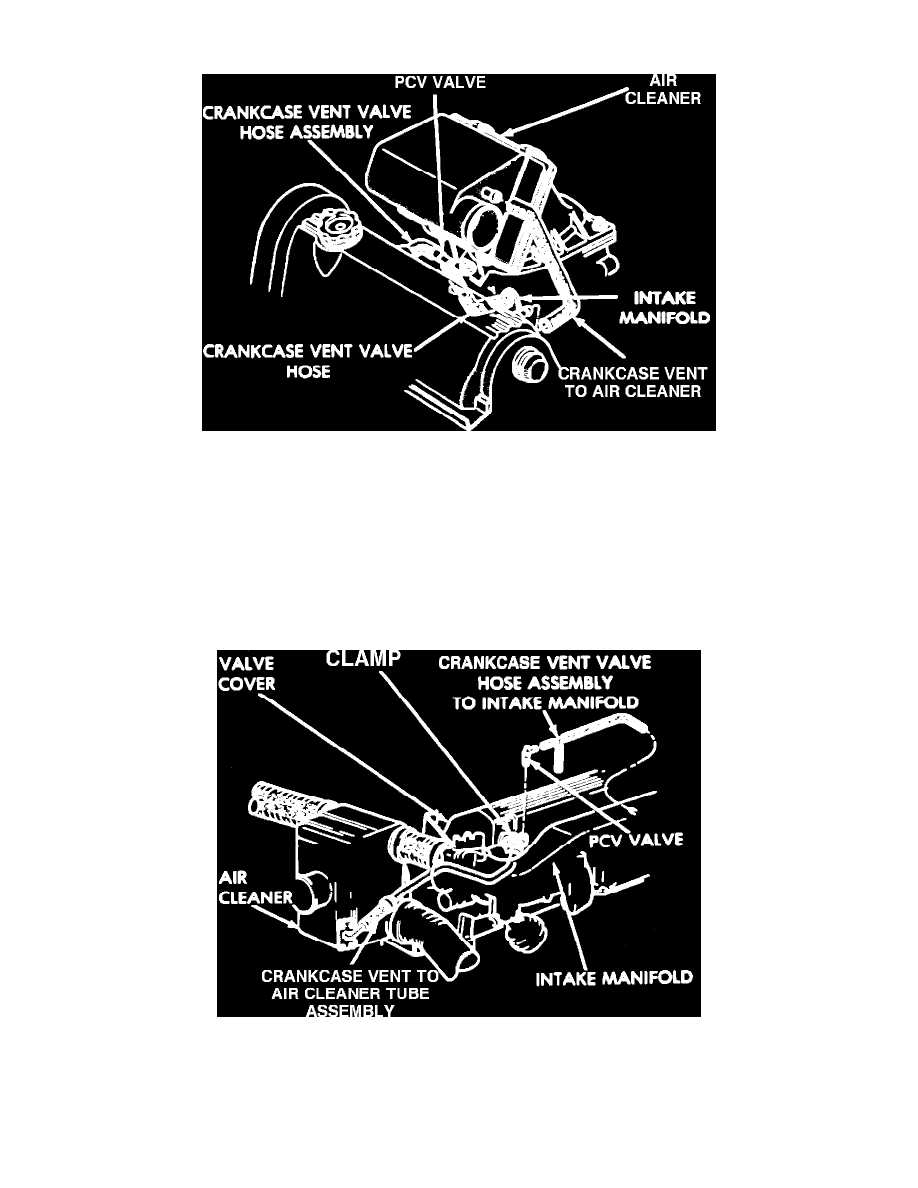Grand Voyager L4-153 2.5L SOHC (1989)

Positive Crankcase Ventilation: Description and Operation
PCV System
NON-TURBO
The purpose of the PCV system is to reduce hydrocarbon (HC) and carbon monoxide (CO) emissions created by engine blow-by. This system is a
closed crankcase ventilation system that consists of a PCV valve, a hose extending from the PCV valve to the intake manifold, a crankcase inlet air filter,
and a hose connected from the crankcase inlet air filter to the valve cover.
Crankcase vapors and piston blow-by are removed from the engine by manifold vacuum. These gases are drawn through the PCV hose and into the
intake plenum, they mix with the calibrated air/fuel mixture, and get burned and expelled with the exhaust gases. No fresh air enters the crankcase with
this system.
PCV System (Turbo)
TURBO
The purpose of the PCV system is to reduce hydrocarbon (HC) and carbon monoxide (CO) emissions created by engine blow-by. This system is a
closed crankcase ventilation system that consists of a PCV valve, a hose extending from the PCV valve to the intake manifold, a crankcase inlet air filter,
